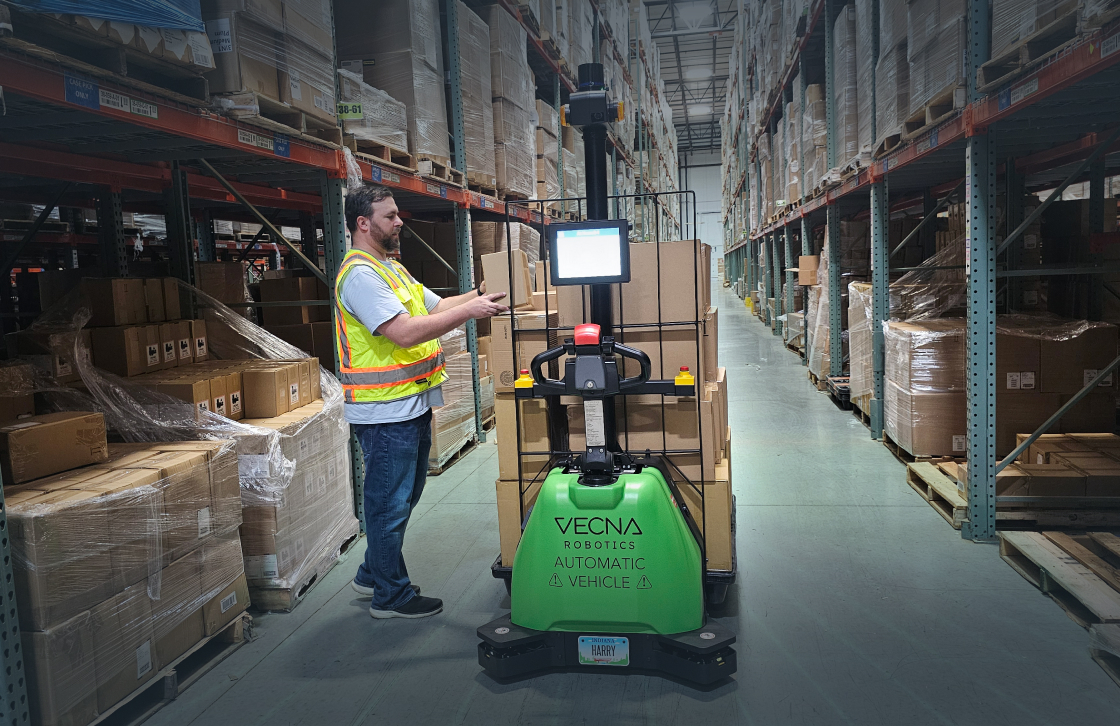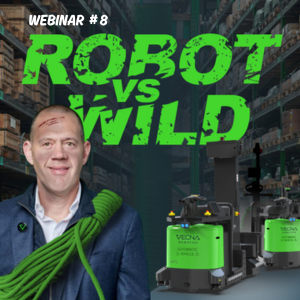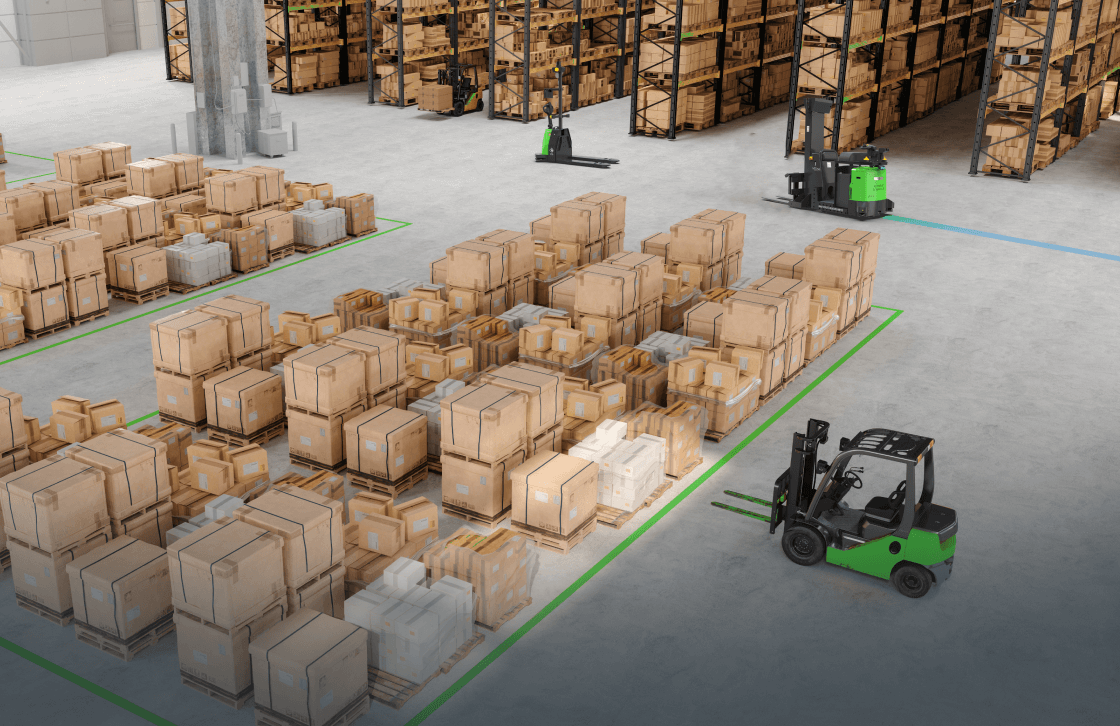Promat is always an exciting time for industrial automation. It was always a big deal for the material handling industry, but over the last 6 years it has really evolved into a robotics show. I can still remember Promat 2017 when there were just a handful of us robotics startups shoved in the back corner; now AMRs and picking robots are center stage, displaying some of the most prominent and impressive booths, claiming over half the exhibition space, and covered in a majority of seminars and
thought leadership over the course of the event.
In fact, I would argue that Promat has really become to supply chain and industrial automation what CES has become for automotive and consumer tech –– it is a time for hundreds of new product launches; a showcase for new startups looking to enter the market with a splash; a chance to see the latest technological advances and gawk at new concepts; and most importantly, a temperature gauge on the market as a whole and a glimpse into where the industry is heading. And given the dominating presence of robotics everywhere, it is proof that automation is most definitely the future of supply chain.
However, the most remarkable part of Promat 2023 is not just the sheer number of robots present, but the amount of boring robots at the show. Just like CES with their concept cars and one-off demos that will never be seen or heard from again, it’s hard not to get enthralled by shiny new toys like humanoid robots, or to check out early new concepts – like custom trailer loading robots – that may take off in the next few years. Were they cool? Absolutely. But it’s not my biggest takeaway from the show.
What I mainly noticed is that as you walked the floor at Promat you tended to quickly notice some patterns, namely that there are a lot of companies doing very “boring” automation – moving pallets from A to B; picking objects from one bin into another; improving the efficiency of forklift operators and material handlers in severely understaffed operations so they can still keep up with demands. It is easy to get caught up in the excitement of the show and get distracted from mainstream solutions by shiny objects (“I’ve seen it all before”) – but if anything, this proliferation of “boring” automation should be the most exciting news of the show for end users.
What this signals to the market is that flexible material handling automation has rapidly matured out of innovation proof-of-concepts and into the mainstream. While the public may get caught up in the hype of potentially deploying POCs of humanoid robots in EV factories as early as 2025, many leading market analysts in supply chain and robotics predict that general material handling AMRs and picking robots will be in the midst of crossing the chasm and exhibiting explosive growth by then.
You can see it from the vendors as well – we talk less about the technology and more about case studies, industry niches, and partnerships; we talk less about the robots themselves and more about workflows and applications; new product announcements tend to be centered around system-level improvements and the full product solution, such as analytics software and new integrations; and industry challenges are far past proving whether the robots work, and are instead focused on how can we deploy and scale faster and easier.
What this means for manufacturing and supply chain leaders:
1. “Boring” use cases need to be the top priority for end users
Many organizations start their automation journey by trying to automate a highly-complicated, highly-variable, and high-cost manual task that often requires very sophisticated automation and yet still retains lots of edge cases and exceptions (such as trailer loading and unloading). If you only find 1-2 vendors that are reluctantly willing to deploy this challenging and/or custom use case you have in mind (after several months of additional R&D, additional $$$$, and using you as a guinea pig), but you can find 10 others that can deploy a simpler use case with an off-the-shelf solution today, that should tell you something. While I know this comes from a place of well-meaning by the users, many have the tendency to start with their hardest problems first, whereas the most mature users of automation understand that there are plenty of opportunities for lower-hanging fruit that, while not as exciting, can still provide plenty of benefits.
For example, simple A->B pallet movement — such as shuttling from receiving to VNA staging or from a stretch wrapper to outbound staging — can reduce operating costs by 25-30% in a large, multi-shift warehouse. While it is not necessarily the sexiest thing in the world, a retailer or 3PL with multiple large DCs can substantially reduce costs at scale, as well as develop valuable internal expertise and best practices for future automation projects. Speaking of which…
2. Build internal capabilities and standards to prepare your network for automation
A recent McKinsey study noted that outside of costs and ROI challenges — which will inevitably improve as the technology scales and labor rates continue to rise — technology readiness, lack of knowledge and implementation, integration, and onboarding challenges are the biggest blockers to adoption. This makes sense given we’ve built warehouses and factories around humans and manual operations for decades and that this is new technology, but it is not insurmountable.
Take note from market leaders that have successfully adopted automation at scale by forming centralized, multidisciplinary automation teams that can onboard new technology, disseminate knowledge, and drive standards across the enterprise. For example, operations and engineering leadership can identify candidate sites that are ready to deploy while driving towards standardized processes and materials across the network instead of each facility operating independently with custom workflows and payloads. IT leadership should ensure adequate wireless infrastructure is in place to enable these systems and upgrade to modern, standardized WMS/ERP systems to simplify integrations. All of which is driving towards:
3. Automation needs to be an executive-led initiative, not a one-off project
Most importantly, users need to effectively change the way they adopt automation.
Historically, material handling automation has consisted of custom projects for individual facilities, spearheaded by individuals at the local level with capex budgets allocated from corporate line executives. This leads to current industry bottlenecks – high levels of customization that drive up costs and technology risks; lengthy budgeting and deployment cycles leading to cost overruns and project fatigue; and business case challenges when selling up to executives due to viewing each deployment as a short-term cost reduction project vs. a strategic initiative.
Instead, supply chain leaders need to view material handling automation as a strategic technology investment. Modern material handling automation — while still consisting of physical equipment — is a software-driven system and should be treated similar to the way IT makes centralized decisions and adoption strategies for other software systems. Automation strategies should start with the CSCO and CIO, and leverage the centralized teams mentioned above to effectively onboard new vendors and use cases while driving towards a broader vision and scalable, standardized solutions.
So to recap the #1 lesson from Promat 2023 – while there were a lot of cool new robotic concepts that grabbed a lot of attention, the more important takeaway is that there were also a lot more “boring” robotic systems that are mature, in production, and ready for scale. Does this mean companies should stop piloting innovative new robotics technologies and use cases? Of course not. But it does mean that they need to prioritize investing in proven technologies/case studies and developing their own organizations so they can effectively bridge the gap from piloting innovation to truly reaping the benefits of automation at scale.
To learn more about how to adopt “boring” automation technologies at strategic scale, Vecna Robotics will have a booth and a presentation slot at the upcoming Gartner Supply Chain Expo in Orlando May 8-10. To get your Return on Robotics analysis kickstarted, consult our ROR Calculator. For more information about how you can get started with your logistics automation journey, go to our From No Bot to Robot page, or can contact us today to schedule a consultation with a factory automation expert.




